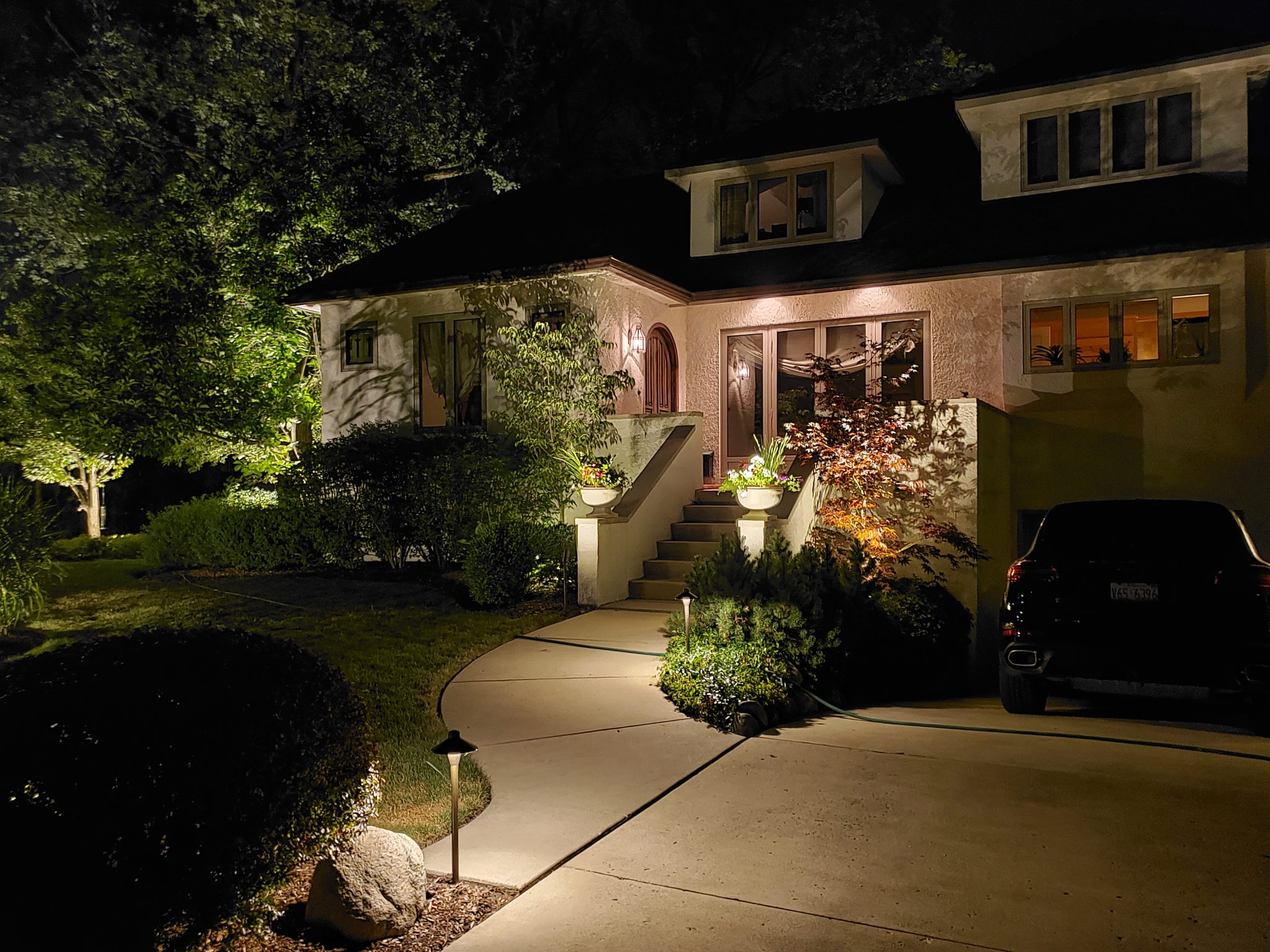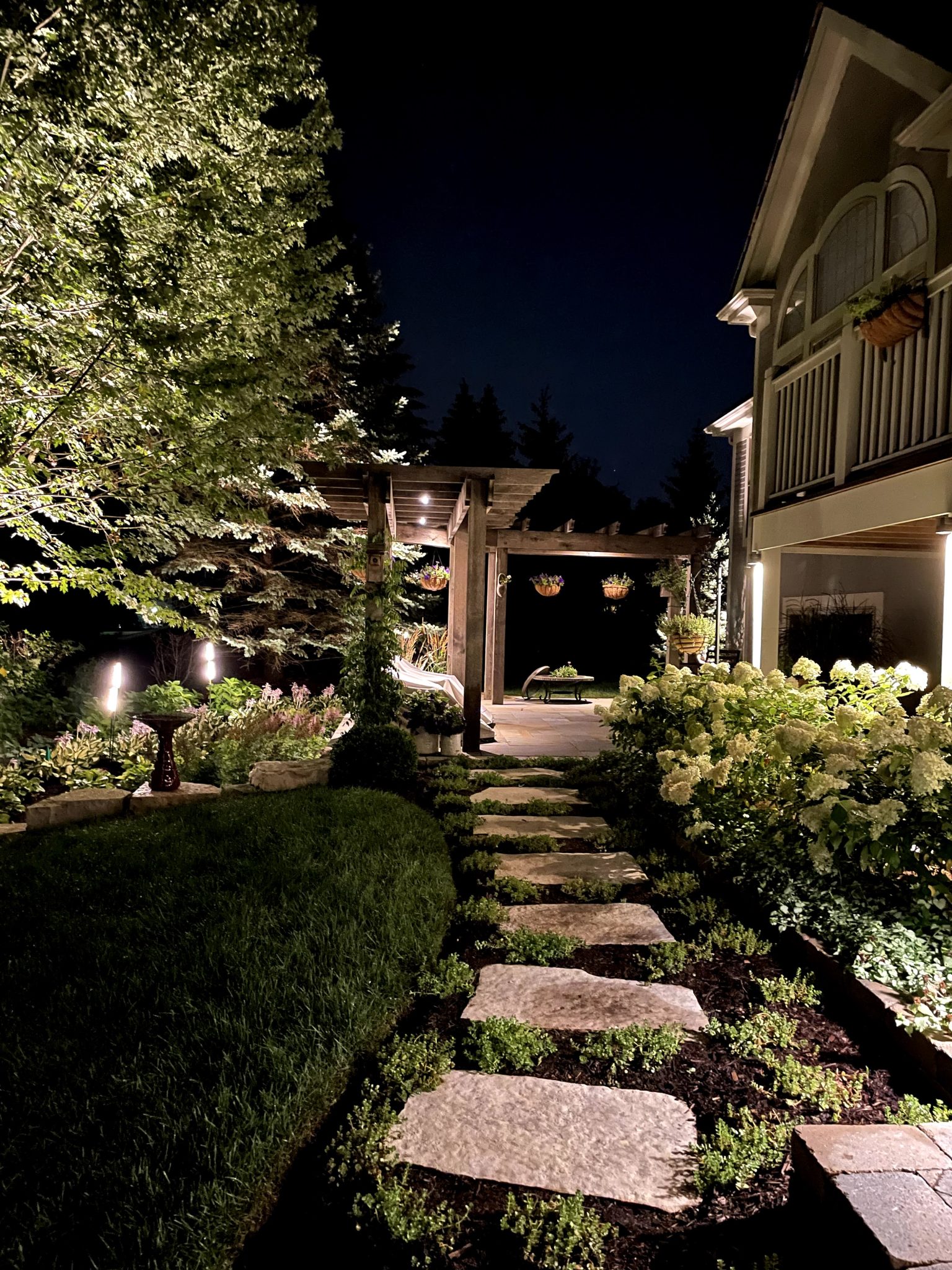4 Ways to Light Your Outdoor Paths
Looking for ways to light your outdoor paths this season? Outdoor lighting is part art, part pragmatism. A well-lit outdoor path allows users to navigate at all times of the day or night without worrying about tripping, slipping, or missing a step while providing a unique dimension that can illuminate the textural integrity of the path, adjacent landscaping, or the building that connects to the path. Fortunately, lighting outdoor paths are not set in stone and allow a multitude of options that integrate different positioning, lighting positions, and materials to create the pathway lighting that fits your tastes and needs.
The Best 4 Ways to Light Your Outdoor Paths
 1. ) Lighting positioned on adjacent structures
1. ) Lighting positioned on adjacent structures
Pathway lighting is generally used to integrate into overall outdoor lighting schemes, particularly regarding lighting that is used to illuminate the front or entrance of a building. Since lighting is popular outside or adjacent to front doors, pathway lighting can continue this theme. For pathways that run along the perimeter of a building, lighting can be positioned overhead or on the walls themselves with lamps that are directed to face the path. Lamps placed at knee height are a great way to direct light onto the path itself, while lighting directed at 6 feet or higher offers a greater illumination trajectory with less direct light on the path itself. For driveways that run along a home and that go directly to the front door or entrances into a building that is accessed into the evening, wall-positioned lighting offers an excellent source of illumination. Click to see our gallery for ideas on outdoor path lighting.
2. ) Lighting within vegetation
Many pathway designs weave landscaping into the pathway itself, with pathway lighting providing a key aesthetic as well as a functional element. In some instances, uplighting that is positioned at the base of trees and shrubs can be positioned so that it directs from the roots upward, providing illumination for the general direction of the path but which does not provide maximum visibility of the path itself. For lighting positioned with more herbaceous vegetation surrounding the beams, having fixtures positioned at regular intervals that project horizontally combines pathways light and illumination of the surrounding landscaping. For lighting that provides 180-degree illumination from the point of projection, such pathway lighting not only provides great visibility for the path but also allows a unique design element that can illuminate adjacent greenery for a unique nighttime effect.
3. ) Low-lying lighting directed toward the pathway
Among the more popular methods for directing lighting onto outdoor pathways is to position low-level fixtures in proximity to the path itself. This method is advantageous because it provides lighting directly onto the path, requiring less powerful and more energy-intense lighting while providing maximum illumination and improved visibility. Beyond illuminating the paths themselves, certain types of low-level lighting can also be positioned to illuminate different structure features as well as vegetation. Using short fixtures adjacent to paths is a popular lighting method. Well lighting is another popular method that provides substantial illumination, though not as much lighting that will be directed to the path itself. Down lighting provides another excellent lighting source with lights that can be repositioned to accommodate seasonal or personal preferences. Linear lighting is another option for short or low-lying paths that provides illumination on the path itself. All these lighting options use LED lamps that provide efficient lighting with long-lamp life.
4. ) Lighting coming from individual steps
Lighting around steps and stairways is very important for outdoor paths as these areas can become fall or trip hazards, especially when there is wet or inclement weather. Something else to be aware of is that as we get older our eyes do not adjust from light to dark as fast as they used to. Thankfully lighting options abound, making lighting steps as easy and effective as any other lighting arrangement. One popular style is to provide lighting for individual steps or step groupings. This can be done with small fixtures that overhang the steps themselves. Another option is to have lighting embedded within the steps themselves, either on the treads (the horizontal features) or the risers (the vertical component), that allows pedestrians to see the steps as one is traversing them. Lighting can also be positioned on adjacent walls or retaining walls, either on the vertical surface or on horizontal overhangs, that provide adequate illumination while also improving the aesthetic aspects of the staircase or stepped walkway.
When it comes to outdoor lighting, creativity is the limiting factor. Lighting can come in a variety of shapes and designs, with straight or curved posts, horizontal or vertical light projections, and lamps that are fixed or capable of being tilted. Lighting can be positioned directly on or over the path, providing maximum illumination, or positioned to provide accentuation of adjacent structures and vegetation. With lighting options that can be designed for individual power supplies, you can enjoy lighting wherever your outdoor needs take you. Hopefully, you’ve found some design ideas that can help you envision your future outdoor lighting project. Our designers are ready to meet with you to create a custom lighting design for your home so you can enjoy your landscape day or night. Call us to schedule your design consultation.

